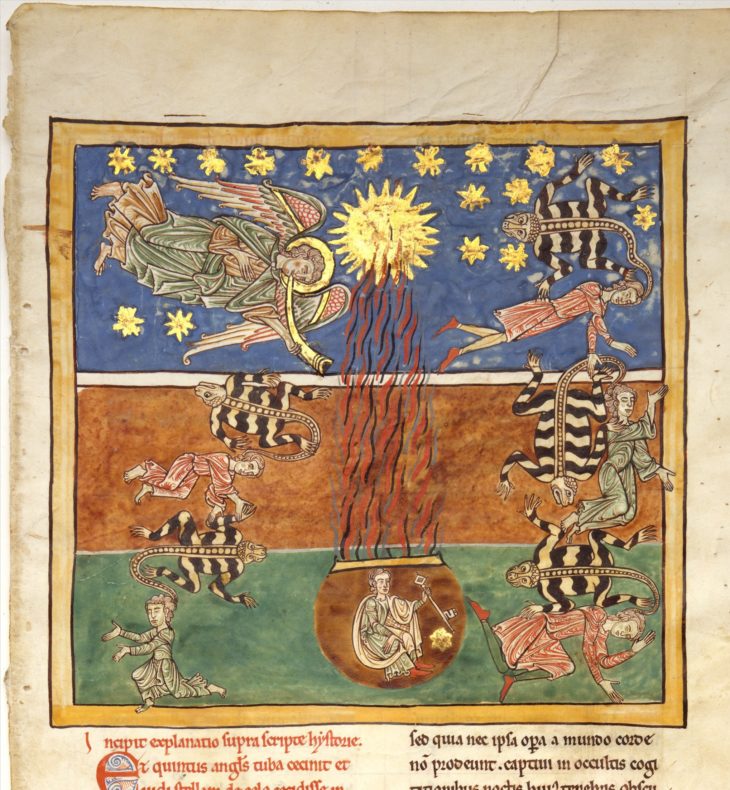 Last week Michelle wrote that, given the speed of change in the reality under the science, climatology needed some new words, and she proposed a beauty: “antevernal,” meaning “daffodils blooming in February.” To back her word-making, she quoted a naturalist: “If the language we use to speak of the natural world is not innovative and engaging, then is it any wonder that few young people get excited about nature?” I agree with Michelle’s argument, I think the naturalist’s sentence is delightful, and I’ll add that astronomers have been doing this all along.
Last week Michelle wrote that, given the speed of change in the reality under the science, climatology needed some new words, and she proposed a beauty: “antevernal,” meaning “daffodils blooming in February.” To back her word-making, she quoted a naturalist: “If the language we use to speak of the natural world is not innovative and engaging, then is it any wonder that few young people get excited about nature?” I agree with Michelle’s argument, I think the naturalist’s sentence is delightful, and I’ll add that astronomers have been doing this all along.
With significant exceptions. After the ancient Arabs gave stars lovely names like Aldebaran, Deneb, Rigel, and Vega, among others, Western astronomers found too many stars for individual names and substituted names like Alpha Lyrae (Vega) and Beta Orionis (Rigel) that were systematic — the first brightest star in the constellation Lyra and the second brightest in Orion — but still pretty nice. By the time the large astronomical surveys showed up with their giant catalogs, stars were named for their catalog numbers, like HIP21421 (Aldebaran) or by their positions in the longitude and latitude of the sky, like SDSS J1110+0116 (who knows). Galaxy names are just as unlovely and confusing: M87 is also named NGC4486, 3C274, and Virgo A. This is just the tip of the astro-naming iceberg; it’s an unfortunate situation that I’ve had to address before. The International Astronomical Union tries to impose order and occasionally tries to return to loveliness. I think Pipirima is quite nice.
Otherwise, tbough astronomers have their fair share of opaque jargon, their words and phrases are often, as Michelle’s naturalist would say, “innovative and engaging.” Some of them are science metaphors: tidal locking, standard candles, or my favorite, violent equilibrium. And some are just poetry.
You’ll know “black holes,” places in the universe where matter is so dense and space/time so deeply curved that light can’t escape. The exact point of density and curvature is sort of a conceptual point, not even a dot; it’s an idea or math, and it’s called a “singularity.” The closest light or anything else can get to a black hole and still escape it is called the “event horizon.”
You might also know “redshift,” a Doppler effect not in sound but in light, so that the light of something moving away from us is shifted from its normal, say, yellowish light toward the red, becoming orangeish.
I like the names of the grid lines in the sky that are astronomy’s longitude and latitude: respectively, “right ascension”and “declination.” I looked up why astronomers made up those particular names, but my cognitive abilities don’t extend to mapping a flat grid onto a sphere seen from the inside, so I don’t understand the reasons for the names.
“Transients” are all those things that come and go (like comets or meteors) or blink on and off (like some novas or pulsars) or appear and disappear (like supernovas or gamma ray bursts or the brand-new kilonova). A “terminator” is the moving line between light and dark, seen on the moon or other planets or on the earth by cameras in space.
“Earthshine” is the name for the light that sometimes appears on the dark part of a non-full moon. You’ve seen it – the moon looks like a bright crescent that ends in a terminator, but the rest of the unlit moon isn’t invisible, it glows. It’s the opposite of moonlight: it’s sunlight reflecting off the earth and lighting up the moon.
Years ago, I started writing about the crowd of dark lines – that turn out to be caused by extremely distant gas clouds or galaxies – in the spectra of quasars because the crowd was called the “Lyman alpha forest.”
And the words I learned most recently might be the ones I like best. “Inspiral” is when two stars, orbiting each other, spiral in closer and closer until the merge into one thing. When the stars are dense enough to be neutron stars, they give off inspiral gravitational waves. In that case, the inspiraling stars make a gravitational “chirp.” Here, you can hear it.
The chirp ends when the stars merge in a “ringdown.” The ringdown sets off the kilonova.
It hasn’t escaped me that as beautiful as these words are, the real poetry is in what’s going on out there, stuff you couldn’t have thought up, stuff you can hardly believe, stuff that makes you remember what “incredible” really means.
________
photo: from the Met’s Creative Commons collection — “Leaf from a Beatus Manuscript: at the Clarion of the Fifth Angel’s Trumpet, a Star Falls from the Sky; the Bottomless Pit is Opened with a Key; Emerging from the Smoke, Locusts Come Upon the Earth and Torment the Deathless”
The chirp from LIGO, the only detector sensitive enough to record it.
One thought on “Poetry”
Comments are closed.